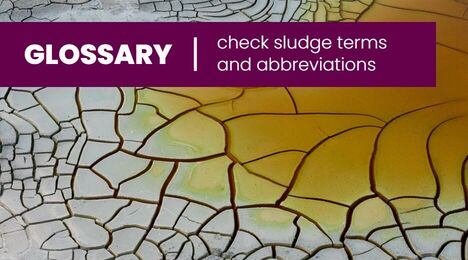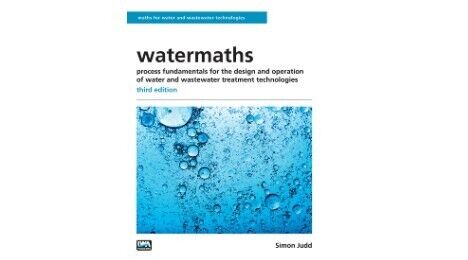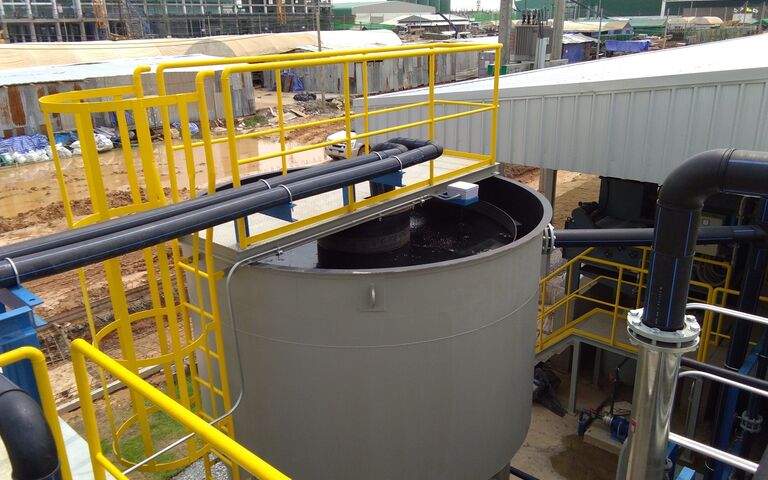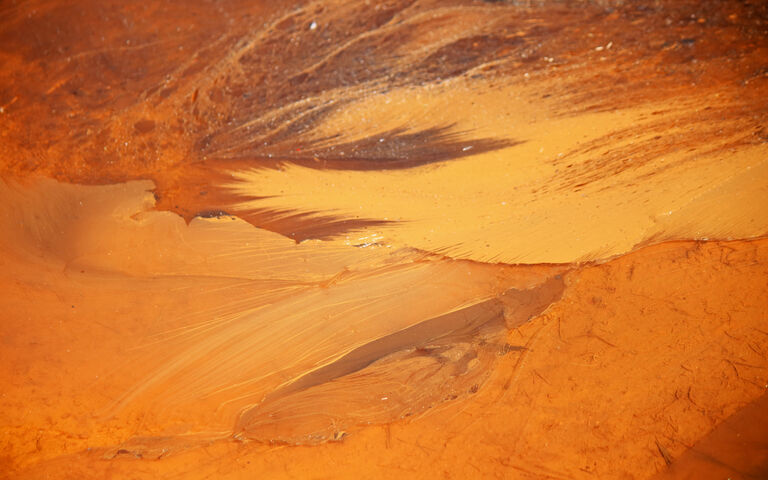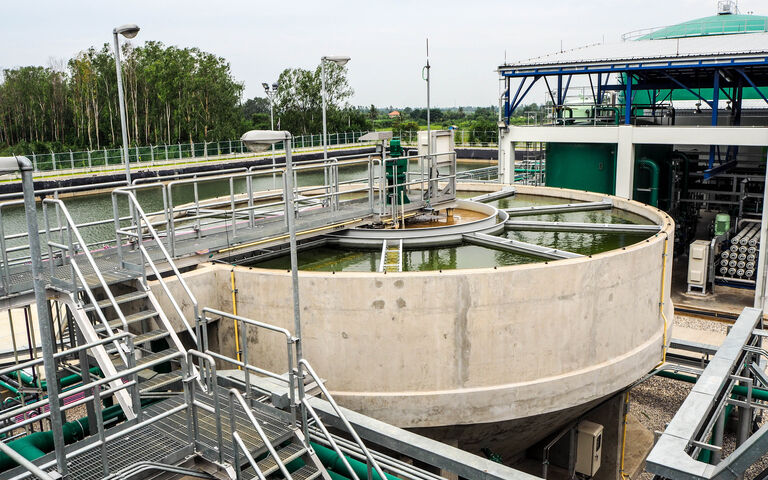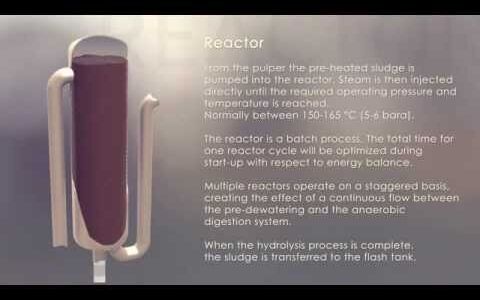Chemical sludge conditioning

Chemical conditioning refers to the chemical pre-treatment of sludge in advance of thickening and dewatering processes.
Sludge conditioning chemicals and their action
Sludge conditioning is carried out to aid the removal of the water from the solids and is most often achieved through dosing with chemicals. Conditioning coalesces (or agglomerates) the smaller sludge particles (1−10 µm) to produce larger ones and reduces the sludge colloidal (the sub-0.1 µm particle/macromolecular size) content. This increases both particle settling and the product cake permeability, consequently increasing the efficiency of the downstream thickening and dewatering processes.
Chemical conditioning is achieved through the dosing of sludge with:
- inorganic (or mineral) coagulants (such as iron or aluminium), and/or
- organic flocculants (or polymers).
Mineral reagents are better suited to processes such as mechanical dewatering (such as a belt or filter press) where a strong floc is preferred to a large, compressible one. Mineral coagulants include:
- ferric or aluminium chloride or sulphate (FeCl3, Fe2(SO4)3, AlCl3, Al2(SO4)3)
- ferric chlorosulphate (FeClSO4)
- polyaluminium or polyferric salts
- lime (slaked lime, Ca(OH)2) or quick lime, CaO), used in alkaline stabilisation.
Ferric salts, and ferric chloride in particular, are often preferred both on economic grounds and on the basis of their effectiveness. Coagulants work by reducing the repulsive sludge particle surface charge, allowing them to agglomerate through this destabilisation effect. Coagulant dosing may be supplemented by lime dosing to increase the cake filterability and retain more of the toxic metals with the solids. Lime dosing additionally stabilises the sludge, reducing its putrescence, odour and pathogenic micro-organism content.
Polymers, usually high-molecular weight polyelectrolytes, may be used either on their own or to supplement inorganic coagulant dosing for some dewatering technologies such as filter presses. Polymers act by forming bridges between the sludge particles, with an additional particle destabilisation action (similar to the action of inorganic coagulants) if the polyelectrolyte is cationic in nature.
There are many different polymer products available, having different charge polarities (cationic, anionic and neutral), charge densities (charge per unit volume), structures (e.g. branched or linear) and molecular weight.
Cationic polyacylamides are used for sludges with high levels of organic matter (OM) content (OM/suspended solids > 40%) and/or cellulose fibre. These chemicals are provided in various molecular weights. Medium-molecular weight polymers are more suited to pressure belt filtration, where high drainability is required, whereas very high-molecular weight polymers tend to generate mechanically strong, shear-resistant flocs better suited to centrifugation.
Anionic polyelectrolytes are more appropriate for treating suspensions or slurries having a high inorganic content, such as from metal hydroxide precipitates. These polymers therefore tend to be used in conjunction with mineral coagulants.
Sludge conditioning chemical dose
The coagulant or polymer dose required to condition the sludge depends on both the sludge characteristics and the dewatering technology being applied downstream of conditioning. Laboratory tests are always required to determine the polymer chemical type and dose, but doses are generally in the range:
- 40−120 kg/teDS FeCl3
- 50−300 kg/teDS CaO (quicklime)
- 2−11 kg/teDS polymer.
| Sludge origin | Filter press FeCl3, kg/teDS | Belt filter Polymer, kg/teDS | Centrifuge Polymer, kg/teDS |
|---|---|---|---|
*Waste activated sludge | |||
| Primary | 40−60 | 2−3 | 4−5 |
| Mixed primary/WAS* | − | 3−5 | 6−9 |
| Mixed digested | 40−100 | 4−5 | 6−9 |
| WAS* | 70−100 | 4−6 | 7−11 |
A high fibre or dense granular solids content of the sludge tends to reduce the required coagulant chemical dose, whereas a high protein content increases it. Adding inorganic reagents increases the sludge inert solids concentration; ~60−70% of the added FeCl3, and 80−90% of the dosed lime, ends up in the dewatered solids (or cake fraction). Organic polymers, on the other hand, can be thermally destroyed along with the other organic content and so do not negatively impact on the sludge calorific value in downstream anaerobic digestion or thermochemical treatment processes.
Sludge conditioning chemical dosing method
Inorganic chemical conditioning of sludge may involve flocculation in successive mixed tanks, the first for metal salts (usually alum or ferric chloride), and the second for lime. High agitation rates (150−300 W/m3) with short durations (5−10 minutes) are used, followed by a longer period under slow-mixing conditions to allow the agglomerated particles (or flocs) to grow.
The flocs formed by conditioning must be preserved by maintaining low shears when conveying the sludge, for example by using screw or progressive cavity pumps. Storing the conditioned sludge for extended periods may also adversely impact on its filterability, since natural bio-degradation of the organic matter can generate colloidal matter.
The conditioning chemicals can be provided either in solid or liquid form, with liquid polymers supplied as an emulsion. If supplied as a powder, then the polymer has to be stored dry and rapidly pre-mixed with water to form a 2−5 g/L solution ready for use, then allowed to rest (20−30 minutes of maturation to allow the polymer to hydrolyse) before application. Solutions must be prepared regularly since the effectiveness of the dissolved polymer slowly decreases over the course of a few days.
Dosing with polymer can be through simple in-line mixing in the case of centrifugal or gravity drum thickening since the rotary action within the process provides sufficient effective mixing for promoting agglomeration. For other thickening/dewatering technologies, dedicated premixing for 20−60 seconds upstream is normally required.
Sludge conditioning testing
Selection of the most appropriate chemical(s) for sludge conditioning is critically important. The effectiveness of agglomeration – i.e. the formation of large aggregates from the particles – can be assessed using standard jar testing equipment. However, other properties, such as the mechanical strength and deformability of the aggregates formed, can also be important in determining the efficiency of the thickening or dewatering operation.
A number of other tests have been developed to assess conditioning performance. These include:
- drainability: the measurement of the rate at which water drains under gravity through a standard filter paper
- filterability: the measurement of the rate at which water passes through a standard filter paper under the action of a constant positive pressure on the feed side or a negative pressure (vacuum) on the filtrate side
- settling velocity: the measurement of the rate at which either:
- individual particles settle, or
- bulk particles settle, as represented by the rate at which the boundary between the settled material and the supernatant moves in a settling vessel
- specific resistance: the measurement of the hydraulic resistance of the cake formed from the sludge particles, either with reference to:
- the rate at which water drains from the cake under gravity (i.e. the specific resistance to drainage, SRD), or
- the rate at which water flows through a cake under an applied constant positive pressure on the feed side or a negative pressure (vacuum) on the filtrate side (i.e. the specific resistance to filtration, SRF)
- agglomerate mechanical strength: the measurement of the extent of disintegration of the agglomerated particles (or flocs) through applying a high shear rate to the agglomerates and relating the energy or velocity gradient applied to the maximum or average size of the residual disintegrated flocs.
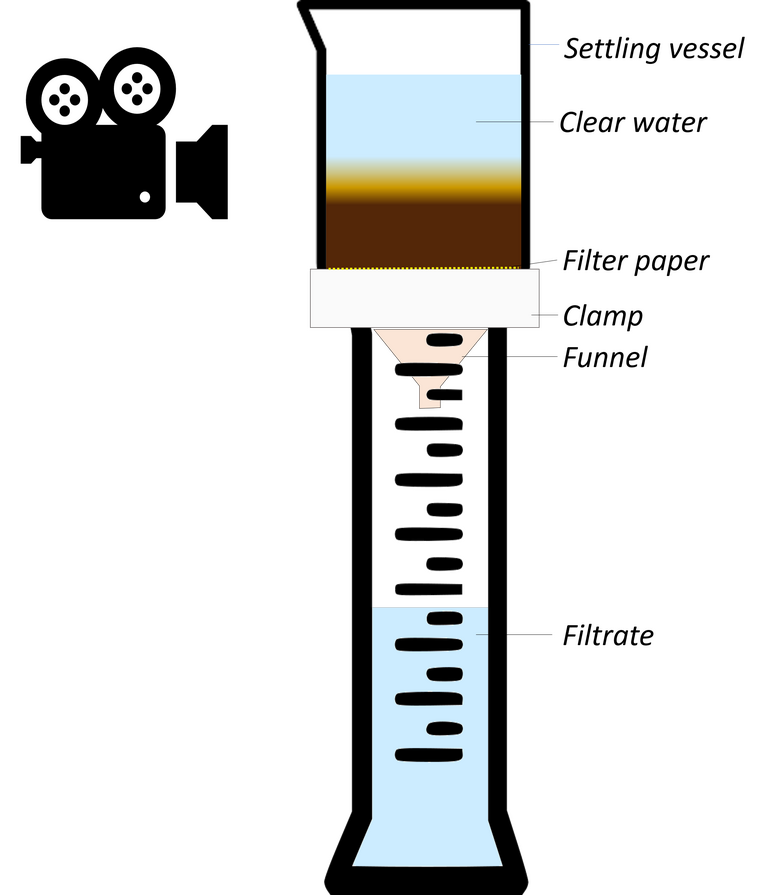
An apparatus such as the one above can be used to measure drainability, bulk particle settling and the SRD. The rate at which both the moving boundary between the supernatant and the settled sludge moves downwards, and the filtrate accumulates, are simultaneously measured. A similar apparatus can be used to measure the SRF if a vacuum is applied to the filtrate side to create a differential pressure across the filter paper.
Measurement of mechanical strength is conducted on individual particles. The procedure requires controlled shear conditions, most easily achieved using standard jar testing equipment, as well as a particle size analyser operating under low-shear conditions to prevent floc breakage by the measuring instrument rather than the applied shear.

